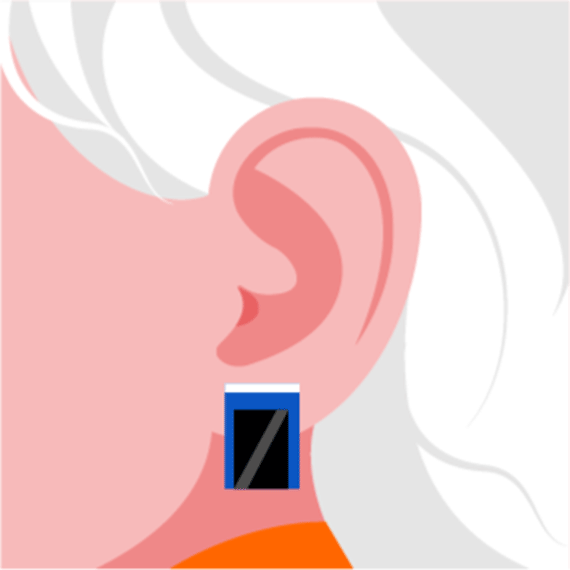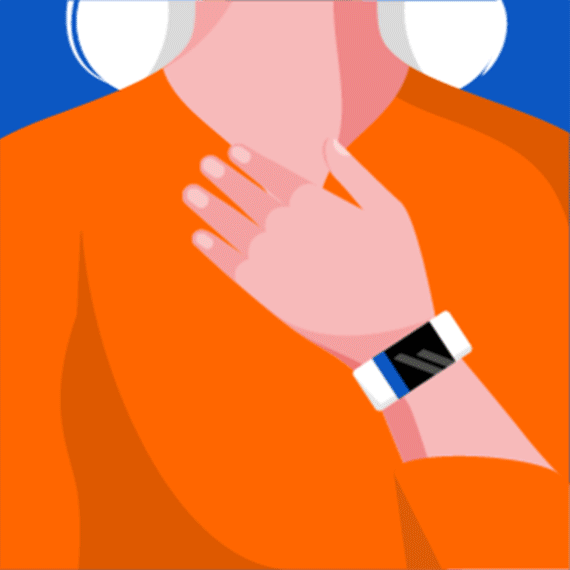From a fitness aid you wear on your morning jog to something that could save your life – how light will be monitoring our vital signs in the future.
“We are currently experiencing a paradigm shift in medicine. Optics are taking over from electrics,” says Dr. Christoph Göltner. The marketing engineer for optical sensors at OSRAM Opto Semiconductors in California is convinced: “Today, it’s mostly electrical sensors that are being used to monitor our health, whereas in future we’ll be using light.
For some time now, optical solutions have been monitoring our vital signs in fitness armbands and smartwatches. The principle here is that LEDs illuminate the skin and tissue down to the blood vessels. The light is absorbed by the hemoglobin in the blood. Based on the rate of absorption, a sensor can draw conclusions about the pulse rate and oxygen saturation. Green light is mostly used for the pulse, as it is best absorbed by the red blood cells. Infrared light is used where the pulse can be measured particularly well – such as earlobes – together with red it is also used for measuring oxygen saturation.

From lifestyle to life saver
Statistics show how important medical use would be for monitoring circulation alone: cardiovascular diseases are the leading cause of death in Western industrialized countries, accounting for around 40 percent. Many of these deaths could be avoided by continuously monitoring the vital signs of patients most at risk. However, the usual method of monitoring, the electrocardiogram (ECG), is not suitable for everyday use. Compact mobile devices equipped with optical sensors, on the other hand, could continuously capture data and sound an immediate alarm. “Optical solutions can be highly accurate. They offer non-invasive measurements over long periods of time and are much more comfortable than electrodes attached to the skin,” says Göltner.
Technology leap
This is made possible by the rapid technological development of LEDs. Thanks to thin-film chip technology, highly efficient LEDs with narrow spectral bandwidths have come onto the market in recent years. Two years ago, OSRAM achieved an efficiency increase of 40 percent for green with the BIOFY product family for biomonitoring applications – a value that was previously considered unattainable. Combined with component miniaturization and advances in thermal stability, this gave rise to entirely new system designs.
But in terms of reliable precision, the bar for medical applications is high. In addition to improving manufacturing precision, engineers are therefore looking for new approaches. For example, they let the light take multiple paths in order to use the best signal. The next trend is the use of VCSELs (Vertical Cavity Surface Emitting Lasers) as a superior light source. “They’re not just more energy efficient. They are even more precise thanks to their better radiation behavior and their narrower wavelength distribution,” explains Göltner.
Fighting fibrillation
Improved optical solutions could in the future warn patients with cardiac arrhythmia against life-threatening atrial fibrillation. A Californian startup, for example, is currently developing a wristband product that permanently monitors the pulse using the BIOFY sensor. The objective is to detect irregular cardiac rhythms early and thus prevent atrial fibrillation or even a heart attack.

Oxygen saturation: sleep easy
Monitoring the oxygen saturation in the blood is another area of application. This requires two sources of light – one red and one infrared. The two are absorbed differently by red blood cells. Oxygen saturation can be determined from this difference – a principle that has been applied every day in hospitals for many years.
“This can be the difference between life and death for people suffering from the widespread problem of sleep apnea,” says Göltner. “Patients with this condition stop breathing during sleep, which can impair vital functions and lead to the brain being starved of oxygen. Here, too, there are already initial certified medical products that monitor oxygen saturation during the night and alert the person asleep if the oxygen content in the blood decreases,” he adds.
Blood sugar: measuring without pain
Intensive research is also being conducted in the field of non-invasive blood sugar measurement. Whereas diabetic patients currently have to prick themselves or wear an implant, the combination of infrared spectroscopy and photothermic detection promises continuous and pain-free measurement of blood sugar values in the future. A bracelet continuously monitoring values that are either too high or too low would significantly simplify the lives of more than 400 million diabetic patients worldwide.
Mind over matter
Using thoughts to control devices is a futuristic sounding application of optical sensors. Göltner is enthusiastic about the possibilities: “I’ve tested it myself and I was surprised how well it already works. Simply by concentrating, I was able to move a ball from right to left on a screen.” Up to now, electrodes attached to the head have been used to measure brain waves (EEG). Optical measurement methods are more precise and less prone to interference.
“It’s not a gimmick,” says Göltner. “Hundreds of scientists and engineers are already working on developing sensors for measuring brain waves. The main field of application will be human-machine interaction, but further into the future, the nerves of people suffering from paralysis could be stimulated in this way,” he explains.
Even though such applications are many years away, there is proof already that optical technologies do in fact work. That’s why Göltner can say with utter conviction: “The path to the global success of optics in medicine has only just begun.”